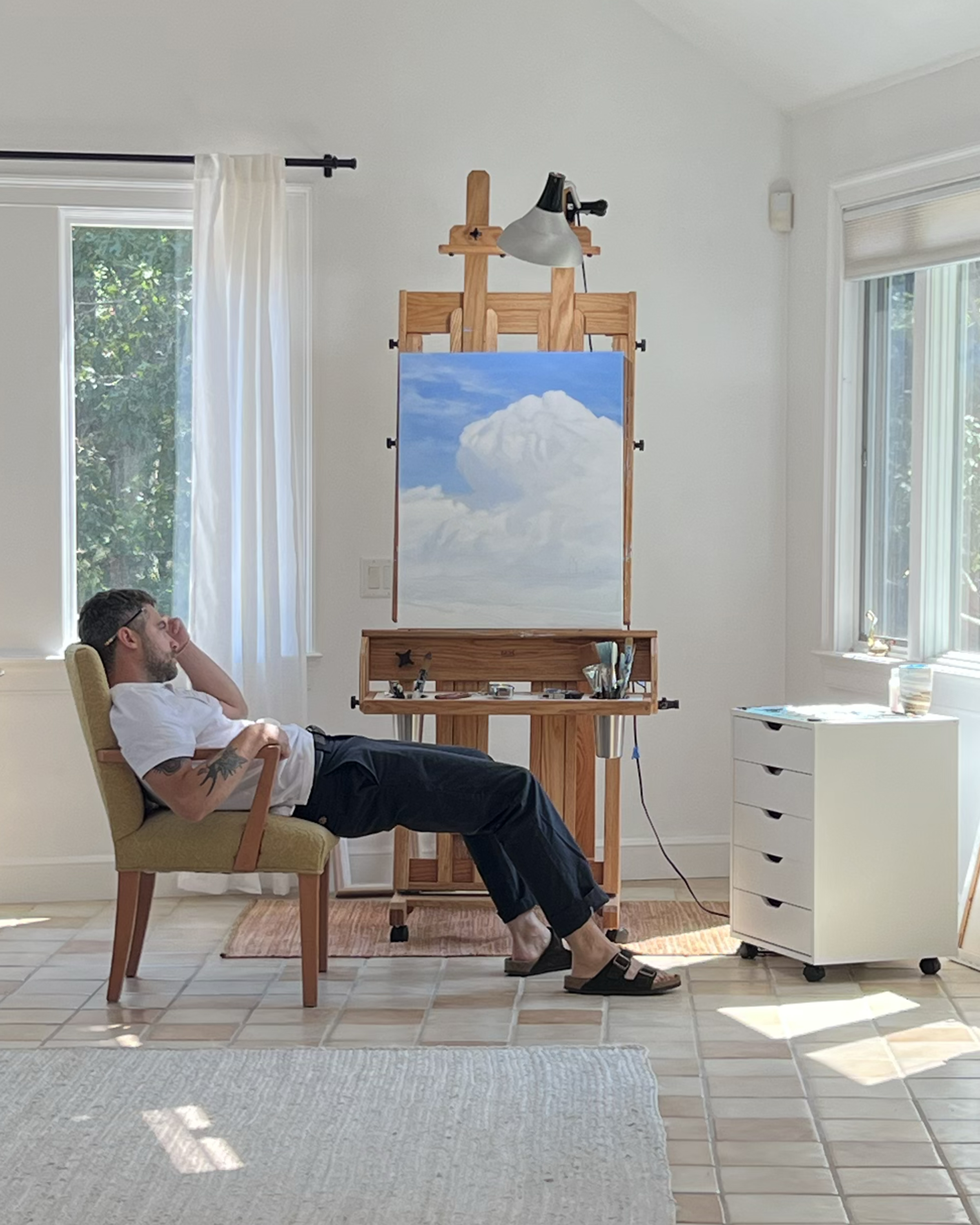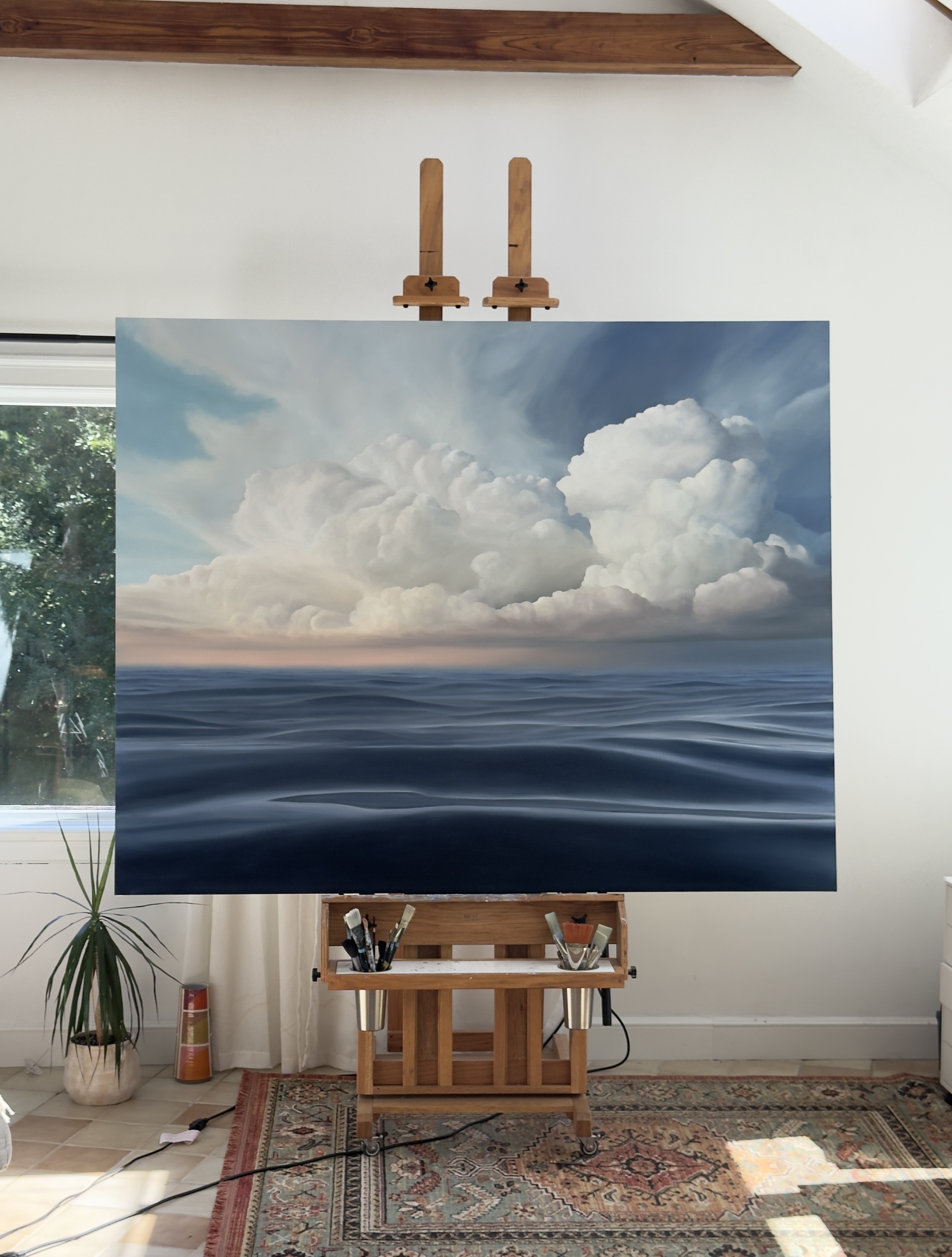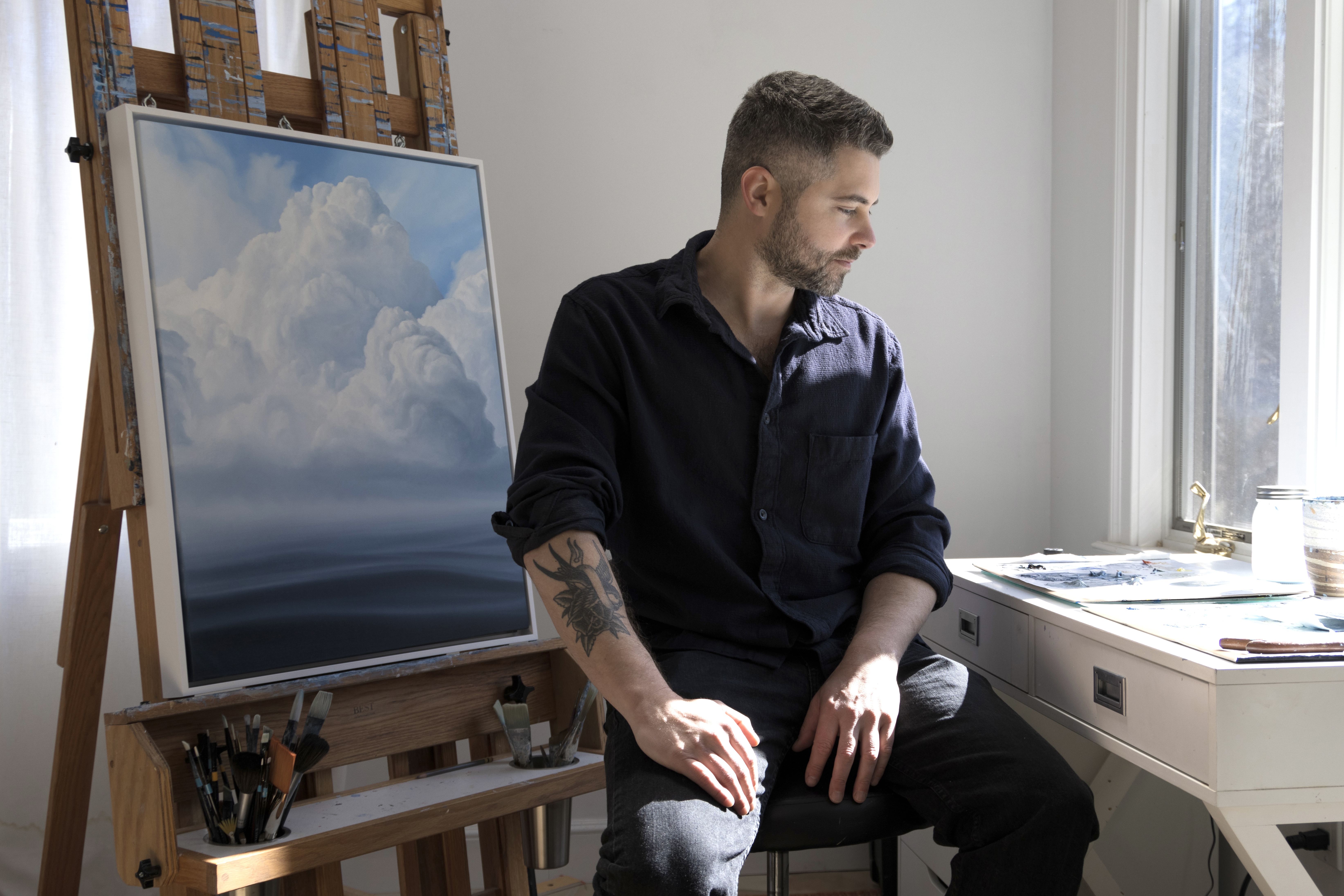Born in 1987 and raised in the storied art colony of Provincetown, Massachusetts, Derek Macara was immersed in creative culture from a young age. He studied at the Hawthorne School of Art - once the home of portraitist Charles W. Hawthorne - and absorbed artistic conversation and technique in his uncle's studio, surrounded by visiting artists.
Before fully committing to painting, Macara made his living as a commercial fisherman. Years on the water gave him an intimate and visceral understanding of the sea’s temperaments - its serenity, volatility, and ever-shifting character - and that lived knowledge now imbues his seascapes with authenticity and emotional depth.

Macara’s creative process merges classical oil painting methods with modern digital tools. He begins with personal photographs, merging them into composite images using digital editing as preliminary guides. These references are then translated onto canvas, where he gracefully diverges from the plan, allowing intuition and imagination to guide the evolution of the painting.
His works feature distilled, thoughtfully composed seascapes that blend clarity with poetic mood. Common motifs - lighthouses, boats, moody skies - are presented with both accuracy and emotional resonance, provoking a sense of calm, wonder, and timelessness in viewers.

Macara’s career gained momentum following a humble, sold-out debut in a Provincetown pizza shop - a turning point that revealed the potential of his artistic path. Since then, his presence has expanded globally, buoyed by social media. His painting videos - showing vivid transformations from blank canvas to seascape - have gone viral, attracting hundreds of thousands of followers and turning his process into a visual narrative that captivates a broad audience.
Macara’s paintings have become sought-after works in private collections, galleries, and charity auctions, solid evidence of his growing stature in the market and the esteem of collectors.

Derek Macara is a painter whose work arises from the ocean's pulse, artistic heritage, and digital-era creativity. His seascapes are more than rendered scenes - they're atmospheric bridges, inviting us to pause, breathe, and remember the sea’s profound presence.

